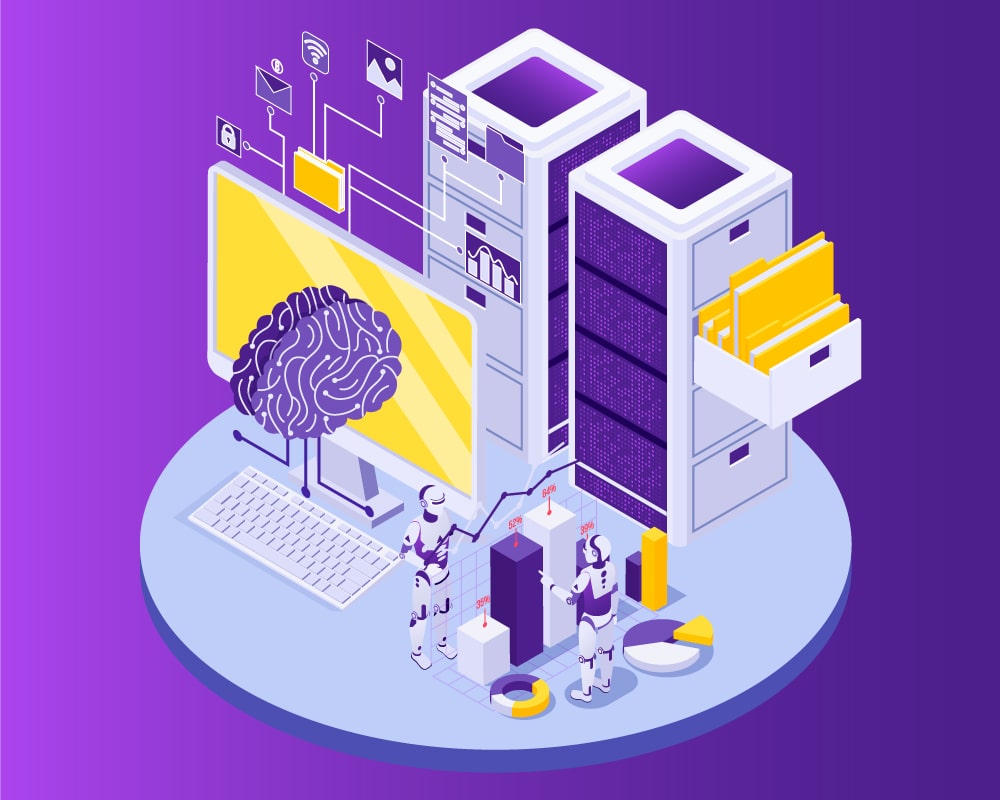


August 17, 2022 Ajith Purayil Operations , Business ,
A version of this Blog was first published on the T-Hub.
Post pandemic, there has been a growing demand for speedy healthcare delivery, quality treatment, and accurate medical data processing. According to the latest statistics, healthcare organizations in the US spend a whopping $2.1 billion on human employees for data processing. Usually, manual data processing is time-consuming and often error-prone.
Thus, healthcare providers (HCPs) constantly look for innovative solutions to accomplish more accurate outcomes. Robotic process automation (RPA) is a pioneering solution to many healthcare challenges. While it improves overall agility, efficiency, and productivity, RPA has its limitations. With the advent and adoption of Hyperautomation as a disruptive technology in the healthcare sector, HCPs can efficiently bridge the gap between innovating tangible healthcare solutions and their delivery.
Hyperautomation is the new-age tool driving global digital transformation. Coined by Gartner, Hyperautomation is a top strategic technology trend. Its core focus is to automate complex business processes through a balanced mix of multiple technologies and platforms like Robotic Process Automation, Artificial Intelligence, Machine Learning, Low-code/No-code tools, and Business Process Management, among many others.
The core tenets of Hyperautomation include –
Gartner predicts that by the end of 2024, multiple business organizations can cut operational costs by almost 30% by leveraging Hyperautomation.
For instance, manual document processing remains a major challenge for various industries including healthcare, retail, and banking & finance. Using Hyperautomation, business executives can automate routine and repetitive tasks like –
It is an exciting domain that healthcare providers can explore to develop sophisticated care delivery systems, efficient internal operations, and data-driven decision-making. Moreover, Hyperautomation promotes personalized customer-brand interactions, enriching the overall customer experience.
Hyperautomation in healthcare has an enormous potential to deliver accurate and cost-effective solutions. Mentioned below are some examples of the same.
Hyperautomation powered by AI, RPA, and data analytics can reduce human touch and enhance a healthcare organization’s Revenue Cycle Management (RCM). For example, AI virtual assistants can help patients connect with doctors and schedule/reschedule appointments. Similarly, RPA and Natural Language Processing come together to identify any missing data during the patient registration or insurance verification processes.
Aggregating data across payer communications (277s, 837s, etc.) to anticipate claim processing issues. The usage of the ML model on ERA 835, and EOB can forecast individual claims reimbursement and identify the changes in payer processing patterns in real-time.
People can take charge of their health using wearables, fitness sensors, and virtual devices. Such remote healthcare devices further promote remote monitoring, wherein doctors can monitor critical patients 24×7 remotely. HCPs can use Hyperautomation clubbed with IoT and AI sensors to check patients’ vitals like blood pressure or glucose level and deliver prompt treatment.
To facilitate a personalized experience, data is gathered related to patient preferences, interactions, and financial transactions. Predictive analytics can be utilized to automatically screen patients in a fair and consistent manner for financial assistance.
Hyperautomation can aid in diagnosing medical conditions. Doctors can interpret radiology scans accurately to deliver quick reports using ML and computer vision technologies. Lab automation uses robotics and advanced software systems to automate instrumentation in lab processes. Automated systems allow lab technicians to fast-track time-consuming tasks, reduce lab wastage, and improve overall efficiency. Ultimately, improved efficiency and minimal human inputs help clinics to cut costs.
Globally, many healthcare organizations have adopted Hyperautomation. US healthcare company CVS Health is an excellent example. It implemented Hyperautomation in its administrative system, automating numerous manual operations like issuing application receipts, payments, and customer requests resolution. Besides expediting business agility, it has lowered the risk of human errors and ensured regulatory compliance.
Using Hyperautomation, the State of California Correctional Healthcare Services can cater to over 98,000 patients. Cheryl Larson, its IT Director, states, “We’ve automated five board of pharmacy requirements for drug reconciliation for controlled substances.” An advanced bot collects data from the facility’s Omni cell machines. It further processes and reports the relevant information to the pharmacist, who then reviews the analyzed data.
Hyperautomation finds numerous applications across industries, including healthcare. The most notable benefits of Hyperautomation include –
Hyperautomation is the future of automation. The vision of robotic machines powered by advanced technologies like AI, ML, and DL is now a reality. The global Hyperautomation market will reach $32,632 million by 2030, growing at a CAGR of 18.7%.
Although organizations across industries may adopt Hyperautomation technology, business executives must remember that it demands a human-machine partnership to deliver optimal results. Professionals working with Hyperautomation must be well-versed with the USP of the various technologies under this umbrella and delegate them to suitable areas accordingly.
Reckitt incorporated Hyperautomation into its IT operations. First, all internal stakeholders aligned to identify the processes and challenges that were time-consuming and could be automated. By doing so, Reckitt could automate over 20% of tasks within each IT domain, including end-user computing and service desk. It helped save many valuable business hours, reducing ITSM costs and errors.
Hyperautomation is undoubtedly the next big thing in the tech world. The healthcare sector is ideal for employing Hyperautomation to design data-driven, customized, and automated healthcare solutions. The idea is to create a knowledge-empowered community wherein professionals can identify digital transformation opportunities to automate mundane tasks, improve workplace productivity, enhance customer experience, and generate more profits.
Of course, there are quite a few challenges and barriers concerning the mass adoption of Hyperautomation. However, through a human-machine collaboration, businesses can successfully tread this path. This is true of every industry, including healthcare.
At JK Tech, we offer end-to-end solutions for your Hyperautomation journey. Our experts deliver disruptive automation solutions leveraging our strategic partnership with Evolute IQ platform to encompass no-code/low-code, iBPMS, AI, ML, IoT, RPA, Blockchain, and Data Analytics.


Hello, I am Aria!
Would you like to know anything in particular? I am happy to assist you.